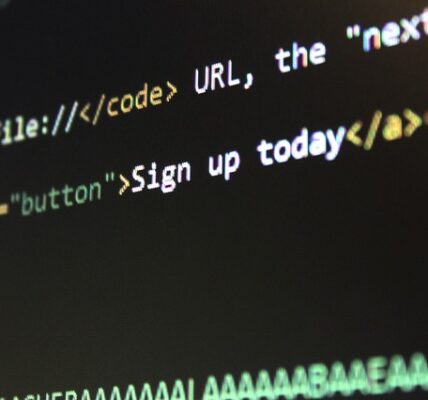Have you ever asked yourself, how to find out what technologies stand behind a website or an app? Or how to identify whether the React.js library was used? These questions sparkle the curiosity of many developers all around the world.
In this modern world of web development, React.js plays an integral role as a cross-platform solution, which gives web designers the ability to create web and mobile applications for multiple platforms. Being an open-source Javascript library, React.js has enabled developers to create applications with better user experience through the use of various components and tools. According to the Statista, React is considered as the most used JavaScript library in 2020, setting the standard for web application development.
In this article, you will learn the methods to determine if React.js has been used to create a website or an app. In addition to that, we will discuss the process and steps needed to identify the technology behind a given software. By understanding these aspects, developers and businesses can create better decisions and choose the right tech stack for their applications.
After reading this article, you will be able to identify if a website or product uses React.js library, create informed decisions when selecting a technology for developing, and recognize the potential advantages of using React.js in future software projects
Definitions
React.js is a JavaScript library used for developing user interfaces. It is created and maintained by Facebook and a community of individual developers and corporations. It can be used for building single-page or mobile applications. React also allows developers to create composable view components that are reusable, which help in creating the complex user interfaces of modern web applications.
When determining if a website is using React, a developer can look at the source code. The code is usually within the head tag and will contain a script tag with a src attribute containing the React.js library URL. It is also possible to check for the React object within the global namespace, which will only exist if React.js has been successfully loaded.
For non-technical users, there are browser add-ons which can be used to detect if a website is using React.js. The add-on will search the page’s code for the React library and will then display a message if the library is found. Additionally, online services can be used to scan a website for certain code patterns, which could be used to determine if the website uses React.js.
Using React.js on a website can provide many advantages, including improved performance and scalability, as well as improved security. Moreover, React simplifies the development process by allowing developers to reuse existing code and components. As a result, websites that use React.js tend to have higher performance and faster load times.
Research Techniques for Determining if a Website Uses React.js
Introduction
The use of React.js is on the rise in web development, as it simplifies the development process and provides tremendous flexibility to web developers. For those familiar or unfamiliar with React.js, being able to accurately determine if a website is using it is beneficial and important to know. In this article, we will look into some of the research techniques that can help you find out if a website is using React.js.
Using Developer Tools
The fastest and most accurate way of determining if a website uses React.js is by using the developer tools available in popular web browsers. This usually involves pressing the F12 key while the website is open and using the inspect feature to view the source code. Once the code is open, one can search for React-specific components and attributes to confirm the website is using the framework. The React developers have also provided an extensive list detailing the components used in the framework for further confirmation.
Traversing the Source Code
The source code can also be traversed manually to look for evidence of React.js. If the website adheres to React.js components, there will likely be a folder or subfolder with the components, along with other relevant code located in the source code. The scripts will likely have data or comments that include React.js specific keywords such as “ReactDOM” or “React.Component”. Additionally, the file type may also be different from the ones found in non-React websites, such as the .jsx file extension.
Checking for Requests
React.js applications load data dynamically with HTTP requests for rendering content on demand. This can be detected by using online tools to find and identify the requests made by the website. By entering the site’s URL into a tool such as the Screaming Frog SEO Spider, one can view all the requests that are sent and received by the page. This technique is most helpful when websites are built on the server-side rendering model.
Summary of Techniques
- Using browser developer tools
- Traversing the source code
- Checking for requests
By utilizing these techniques, one can accurately determine if a website is using React.js. This knowledge can be put to use for a variety of tasks related to web development. Knowing if a website uses React.js can help developers to better understand and work with websites, for example tailoring web content to the framework, as well as providing insights for maintenance and debugging.
Analyzing a Website’s Code to Check React.js Usage
Analyzing a Website’s Code to Check React.js Usage
Browser DevTools
The simplest way to check if a website or web application is using React.js is to use browser DevTools. All major browsers have a built-in tool for inspecting web pages, which can also be used to check if a website is using React.js. By pressing the F12 shortcut or right-clicking on the page and selecting the “Inspect” option, you open the developer tools of your browser. From there, you can inspect the website’s HTML and JavaScript code in further detail.
When inspecting the page’s resources, you will be able to see if the website is using React.js by looking at the list of JavaScript libraries and resources loaded on the page. In the “Sources” tab, find a script similar to “https://unpkg.com/react@16/umd/react.development.js”. This is a good indication that the website is using React.js. Additionally, if the website is using Create React App, then the developer tools should show “cra-webpack.js” or “webpack://” script.
Libraries Used
If the developer tools of your browser do not reveal the fact that React.js is being used, then you can also try inspecting the list of libraries and frameworks used in the development of the website or the web application. Most websites contain a list of the libraries and frameworks they use in the footer section. If you are unable to find this list, it may be included in the source code of the page, where it can be inspected from the “Elements” tab. If React.js is one of the libraries or frameworks mentioned in the footer section or in the source code, then it is a good indication that the website or the web application is using React.js.
In conclusion, there are several ways to check if a website is using React.js. The most straightforward way is to inspect the code of the website through the developer tools of your browser. Additionally, you can also look at the list of libraries and frameworks used in the development of the website or the web application. By following these simple steps, you will be able to reveal if a website is using React.js.
Utilizing Online Tools for Assessing React.js Usage
Inspecting Source Code
Establishing if a website is using React.js requires an understanding of website’s source code. From a basic inspection, it is possible to identify whether or not a website is using React.js. High-level language and scripting content such as HTML and CSS tend to be highly visible in website source code, making it relatively easy to detect. Additionally, if there are JavaScript components of the website, they are typically encapsulated with special tags such as “script” which inevitably make them detectable.
Analyzing Resources
React.js commonly leverages external resources for its functionality, particularly in terms of asset loading. When trying to detect React, a resource-based inspection can be conducted to assess the scripts and libraries used on the website. React.js uses its own libraries such as “React.min.js” and “ReactDOM.min.js” which are easily traceable. Furthermore, depending on the libraries the website is using to communicate to the server, it may be possible to detect React-based traffic.
Utilizing Node Package Manager
Module-based development, which React.js is usually associated with, has made it fairly straightforward to detect the usage of the technology. Many development and version control solutions make use of something known as Node.js, which is an integrated package manager. Using this manager, it is possible to compile list of package dependencies, term which is usually used to refer to the external libraries and components integrated into a given website. This type of inspection makes it effortless to detect React, as well as other libraries being utilized by the website.
Conclusion
Have you ever wondered how to determine if a website uses React.js? When it comes to modern web development, increasingly more websites are adopting React.js, so it’s no surprise that you may be curious to find out whether a particular website is using this technology. In this article, we will uncover the different techniques you can use to ascertain whether a website is using React.js.
If you have any further questions about how to check if a website uses React.js, be sure to follow our blog and stay tuned for more engaging content and technical updates.
Let’s take a look at some frequently asked questions about React.js:
What is React.js? React.js is a JavaScript library that helps developers create interactive user interfaces in web applications. It enables developers to create views for application components, as well as manage event handling, data flow and more.
How do I know if a website is using React.js? There are a few techniques you can use to check whether a website is using React.js. For example, you can inspect the page source code and look for references to React.js, or use browser extensions that detect the presence of React.js.
What are the benefits of using React.js? React.js is commonly used for its performance advantages, as well as its flexibility and scalability. React.js is also known for its simplified development process and easy integration with other frameworks.
Will I need coding skills to use React.js? Yes, React.js is a JavaScript library, so you will need coding skills to make use of it. Knowledge of HTML, CSS and JavaScript are recommended for writing React.js components.
Can React.js be used in mobile development? Yes, React.js can be used for mobile development. The React Native framework helps developers build performant mobile applications with features like component-based architecture, serverless builds and more.
While React.js is a powerful library for web development, it is important to understand how to check if a website uses React.js before attempting any projects. Once you understand the different techniques you can use to make this determination, then you can start to explore the many benefits of React.js.




